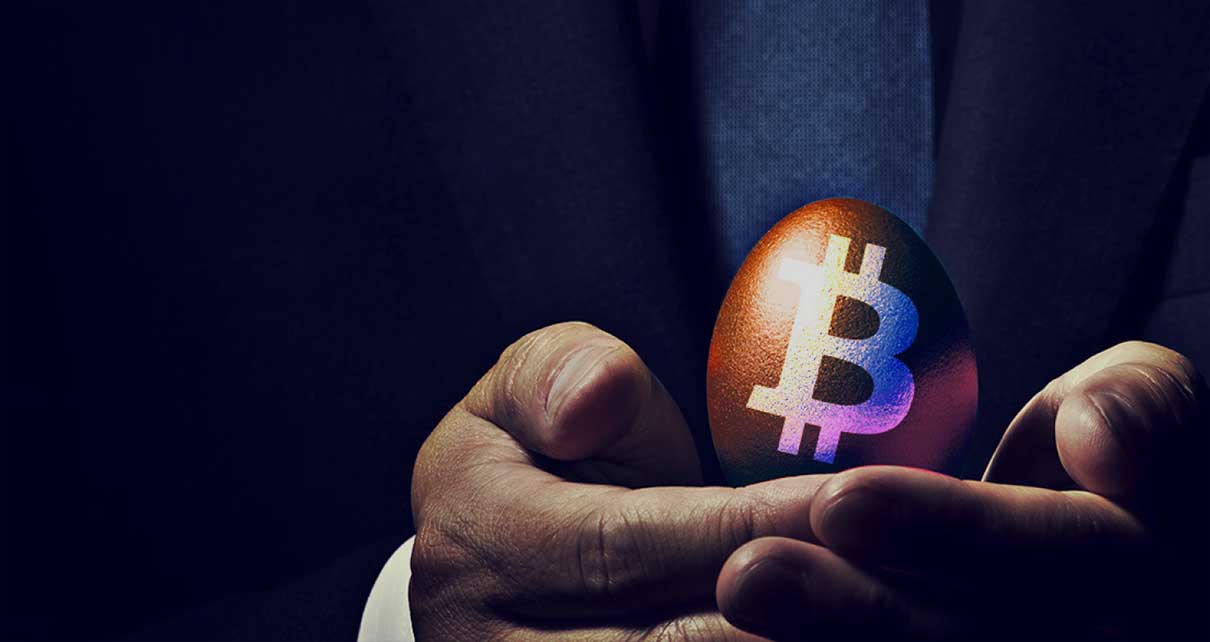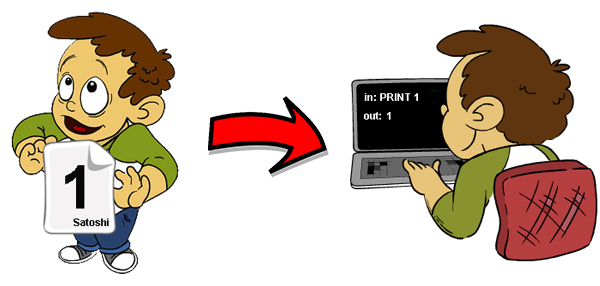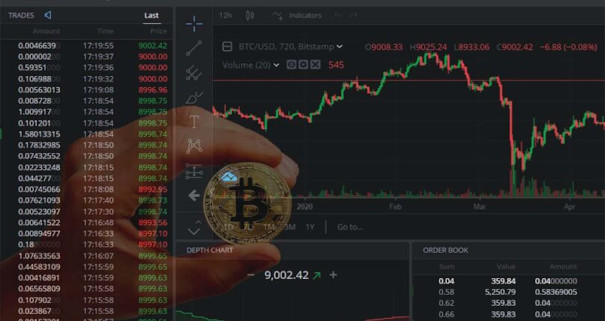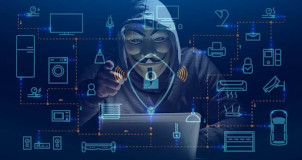
The bitcoin pillars
A summary of this section with some extra info appears in the following video:
I want to share with you the origin of bitcoin and based on that, I want to forecast its future, because the future will always be hidden in the past... The beautiful thing about bitcoin is that it is a clear example of how a market can develop out of nothing. This is not strange, it has always happened throughout history, for example, with salt, gold, and the dollar... and the truth is that it will continue to happen in the future, because new disruptive assets will always emerge. However, bitcoin is special because it is the first one to be digital. But what exactly is a bitcoin? To understand this I want to tell you what a 12-year-old boy once imagined when he was in his bedroom... his name was Satoshi... or at least that's what I want to believe...
This boy asked himself a very simple question: "What would happen if I write the number "1" on a sheet of paper and I tell my friends that this sheet is equal to 1 USD? If I manage to convince a friend that this is true, then he will give me 1 USD in exchange of my sheet, after that he will seek to convince a third person and if he succeeds, he will receive 1 USD as well. If this chain continues and encompasses all the people of the world, then my sheet of paper would become a currency."
Satoshi quickly wrote a giant "1" on a blank sheet of paper and then he ran off looking for his mom, see Fig. 1 (left). He approached her and told her his the idea that he wanted to create a new currency in the world and in order to achieve this, it was enough for her to give him 1 USD in exchange for the sheet of paper. Unfortunately, he couldn't convince his mom and went back to his room totally frustrated. "Why isn't my mom smart? Why doesn't she accept my sheet of paper as a currency? If she does, we would have more money because I would be able to print more copies... True, we would have to convince more people, but being two would already be a great advance" - he said to himself that night. The next day, he tried to convince his friends at school but he didn't succeed either, one of them told him that if he is making them then he would be the only one who would get rich because he could create them whenever he wants and it was not fair for the others. His friend was right and actually both of them without having any clue were discussing what a centralized economy meant, because that's how society behaves nowadays. Central banks print money if they want to inflate the currency and governments increase the interest rates if they want to deflate it, in this shady centralized society, the only owners of the world are them. Satoshi was 12 years old and without knowing it, he was already questioning himself what adults were not capable to see. It was then that he said to his friend: "I know how to solve this obstacle! I will only make 21 million copies and give them for free to 21 million people, I won't create more and therefore I cannot be richer than the others, in the end, we will be able to buy and sell stuff with these copies. "And what is the advantage?" - replied his friend. "Well, we won't use dollars anymore. If the government prints dollars we don't care because we won't use them, we will use instead the currency that I created." His friend didn't get it and probably Satoshi didn't get it either. Over the weeks he could not convince a single friend and therefore he began to accept the idea that it would be impossible to create a new currency in the world...

However, years later sitting in front of his personal computer, he would remember that particular event of his childhood. He just typed PRINT "1" in BASIC and on the screen a "1" was written. Then he understood. The secret was not in writing a "1" on a sheet of paper, but rather, in programming it in a machine, on a digital paper attached to the screen, see Fig. 1 (right), but how can this radically change the concept? When he was a child he could not perceive this, only as a teen he understood, a digital currency is an algorithm, a code that has a value because there is an intellectual effort behind. Satoshi was meant to change the world but before that, a series of events had to take place in order for him to set the pillars of his new currency... pillars that have divided the financial world in two but as the years go on, the final verdict will be known. And what are these pillars...?
The first one is hidden in video games, believe it or not Satoshi's currency was based on them. I would like you to think about those video games that are very popular today or think about those that you think are quite expensive but still people are willing to pay for them. What do they have in common? The most difficult ones, or competitive ones, are precisely the ones that end up becoming more popular, and the ones that are more elaborated are the ones that people don't mind paying more. These two characteristics define a good video game and Satoshi was aware of them, but he saw something else that few managed to glimpse. To understand it, you must recall what a video game is about. In some general sense, in any video game you have to complete different levels, and as you advance these levels become more difficult to the point that you start getting rewards. These rewards are quite vast, for example, you can get medals, trophies, points, and even new unlocked characters. What is the consequence of having rewards as you progress further in the game? That the most advanced levels will offer more valuable rewards because less people are able to complete them. Satoshi saw something unique here, specially because in his time, video games were not so popular as today. These days you might be surprised if I tell you that there are rewards that are worth more than the actual video game, to the point that some people will pay a lot of money just to have them. You may think it's absurd because rewards have no use in the real life; however, this generation that buys rewards online is the generation that will guide us in the future. So when Satoshi thought about it, he realized that the structure of a digital currency should contain the concept of the reward. For him, Bitcoin should behave like a game, just like Mario Bros in the 80s or Fortnite in the new century. There would be rewards, and the further we try to go, the more difficult it would be to get them. The idea was perfect, it had to work, but what would be the rewards? Satoshi didn't think twice, the token, the bitcoin would become the reward. And that was meant to be the first pillar! The Bitcoin game is known as "mining." Instead of having Mario running through pipes to rescue the Princess, what is done in the game of "mining" is to solve complex mathematical equations, whoever solves first the problem gets the reward, and then the game moves up to the next level. Satoshi was a genius, there is no doubt about it, because he always knew that not everyone was going to "mine" and therefore others were going to pay. This is why the price of bitcoins keeps rising over time, because the game is already in more advanced levels and therefore it is more difficult to complete, as a result, the reward is more valuable and therefore its price tends to increase. Most people don't understand this, in the same way that they don't get why teens buy "emotions" in Fortnite. I'm not going to discuss this further because soon or later you will understand that in the gaming world it is quite natural to pay for rewards that have no use in the real life, it is just the way it is and we don't need to question that. But bitcoin is not only a digital reward because it also has a meaning in the real life...
Satoshi began programming the Bitcoin in 2007. Notice that when I refer to the concept or the code Bitcoin is capitalized, in contrast to the token that is written in lowercase. When he did so, he considered 21 million as the maximum number of coins to create. He couldn't afford to make them infinite because then the Bitcoin game would have no end, and if there is no end then it is no longer a game, and if it is no longer a game then it no longer has valuable rewards, because these rewards are valuable only because they are unique and finite. Now if we only have 21 million coins, would they be enough for all the people in the world? What do you think? Today we live in a centralized economy where the money printed by the bank is infinite, there is no upper bound, therefore, it is possible to print money for every person in the world, and not only that, it is also possible to become a millionaire and then a billionaire and later on a trillionaire, this is quite normal in an inflationary system, which is the one we live in. But what if we use a finite currency? Would that be enough? Of course not! Unless this currency has infinite divisibility. And that's precisely the second pillar. Satoshi proposed a concept that knocks down what we have thought about a currency, he literally flipped the concept by 180 degrees, but of course, this was meant to come only in the digital world where infinitesimal numbers are easily verified. Let me explain, how divisible is the dollar? The last division is the cent, 1/100, that is, it has finite divisibility but its upper bound is infinite, there can be as many dollars as the bank wants to create, consequently it is meant to be devalued over time. Satoshi breaks this scheme proposing the opposite, that the upper bound is finite but the lower bound has infinite divisibility. This allows the currency to appreciate over time and be sufficient for everybody in the world. This is how Satoshi built the second pillar, and although today the minimum unit of a bitcoin is 0.00000001, this is a digital number and therefore it can be reduced even more, in contrast, the cent of the dollar could not become a thousandth because over time in an inflationary system things will always end up costing more and the thousandth would have no value at all.
A direct consequence of this second pillar is that by having a finite number of coins no one could replicate them, if there are 21 million coins and nothing more, this gives the currency a universal constant, whoever tries to alter this constant would be detected because it would be enough to recount the coins that circulate in the world; however, there is a flaw with this statement... who would count 21 million coins? Or even worse, how could we count them if they are constantly moving around the world? Satoshi found a way to answer these questions. He first conceived the idea that to count them a public account showing the history of all transactions in the world was needed, this is quite similar to your bank statement where you can see all the transactions that you make, but of course in your case this is private, Satoshi instead proposed a public one so we can see all the transactions that exist, that is, we can count the number of coins through the transactions and thus verify that the universal constant has not changed. It seems easy to implement, but there is a problem with this plan: "Everybody is jealous with their money, almost no one wants to share the amount of money that they have, so how would someone dare to make it public?" The answer relies in the anonymity and that's precisely the third pillar. To be able to share your transactions with the world, it would be enough not to show your name, in such a way, nobody would know how much money do you have. Anonymity was the perfect solution and it was intrinsic to the digital world. For example, the internet is powerful because it is anonymous and if a currency takes the same concept, it is likely going to be powerful as well. This may be regarded as the most important pillar, because who doesn't want to go unnoticed when it comes to wiring money? when it comes to saving money? when it comes to hiding money? That is why this pillar makes the world governments to shake because the only thing that it is needed to avoid taxes is to make anonymous transactions. Although no one is going to admit it today, bitcoin may become the everlasting currency, and as much as the governments believe that it won't happen because they have still the full control, with time, they are slowly losing it. If the governments decide to penalize all bitcoin holders, or decide to ban it in their countries, they would need to shut down the internet so that it will not come back again because the Bitcoin game is free, and because it is a game, many would like to play it again. Furthermore, Satoshi had the insight to release an open version of the code, that is, anyone can create a digital currency because the code is free for everyone. And precisely for this reason we have a lot of cryptocurrencies on the internet today. These cryptocurrencies are called altcoins from the acronym "alternative to bitcoin." Out of all of them, a few will survive and continue to exist, in the same way that today we have the yens, the riyals, and the pesos, alternatives to the dollar that perhaps not having such a global impact can coexist in harmony... But the world governments know this and that is why they are not going to ban it because it would imply that they are afraid. Today there is only one strategy, to accept it with suspicion, imposing certain rules so that the bitsionaries remain happy, after all, what matters is that all the bitcoin holders pay their taxes...

So far I haven't explained to you exactly how he did it, how he put the pieces together, how he tied the dots... I've only showed to you the building blocks. Three pillars set the basis, the reward, the infinite divisibility and the anonymity, see Fig. 2. Based on these pillars, Satoshi was able to develop the concept of the blockchain, but first he had to encrypt the information. What is that? If you want to understand it in detail, I invite you to read the second part of this article:
Views: 1
Notifications
Receive the new articles in your email







